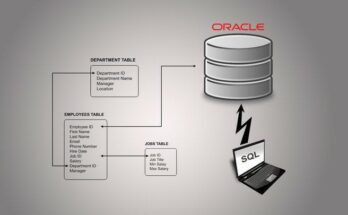Effective presentations are important in various areas of life, from business meetings to academic seminars and public speaking. They are an effective way of conveying information, persuading an audience and communicating with others. In this course, we’ll explore the basics of creating and delivering effective PowerPoint presentations that capture and inform your audience.
“The success of your presentation will be judged not by the knowledge you send but by what the listener receives.” – Lilly Walters
Understanding Your Audience
One of the key elements of delivering a successful presentation is understanding your audience. This involves not only knowing who they are but also understanding their needs, expectations, and interests. By tailoring your presentation to your audience, you can ensure that your message resonates with them and achieves the desired impact.
Design Principles for Impactful Presentations
Design plays a crucial role in the effectiveness of a PowerPoint presentation. Visual hierarchy, contrast, and balance are important principles to consider when designing your slides. Additionally, using images, charts, and diagrams can help convey complex information in a clear and engaging manner.
Creating Engaging Content
Engaging content is essential for keeping your audience interested and attentive. Structuring your presentation in a logical and coherent manner, and incorporating storytelling techniques can help capture the audience’s attention and make your message more memorable.
Mastering PowerPoint Tools
PowerPoint offers a variety of tools and features that can enhance your presentation. Understanding how to use slide layouts, master slides, animations, and transitions can help you create visually appealing and dynamic presentations.
Delivery Techniques
Delivery is another key aspect of a successful presentation. Overcoming nervousness, engaging the audience through body language and voice modulation, and effectively handling questions and feedback are essential skills for a presenter.
Best Practices for Remote Presentations
In today’s digital age, remote presentations have become increasingly common. Knowing how to engage remote audiences, use virtual presentation tools effectively, and manage technical aspects of remote presentations are essential skills for presenters.
Case Studies and Examples
Analysing successful presentations and learning from common mistakes and pitfalls can provide valuable insights into what works and what doesn’t in PowerPoint presentations. By studying real-world examples, you can gain a better understanding of how to create impactful presentations.
Also Read: Microsoft 365 (Office): Maximizing Productivity
Practice Sessions and Feedback
Practice is key to improving your presentation skills. Through practice sessions and feedback from peers and instructors, you can refine your presentation style and delivery, and identify areas for improvement.
Conclusion
In conclusion, mastering the art of PowerPoint presentations requires a combination of design skills, content creation, and delivery techniques. By understanding your audience, following design principles, and practicing your skills, you can create presentations that inform, engage, and inspire your audience.
FAQ
Q: How can I make my PowerPoint presentations more engaging?
To make your presentations more engaging, consider using visuals such as images, charts, and diagrams, and incorporate storytelling techniques to capture the audience’s attention.
Q: How can I overcome nervousness when delivering a presentation?
Practice is key to overcoming nervousness. Rehearse your presentation multiple times, and focus on your breathing and body language to help calm your nerves.
Q: What are some common pitfalls to avoid in PowerPoint presentations?
Some common pitfalls to avoid include overcrowding slides with text, using too many animations or transitions, and not rehearsing your presentation enough.
Q: How can I effectively use animations and transitions in my PowerPoint presentations? A: Animations and transitions can enhance your presentation if used sparingly and purposefully. Use animations to reveal key points or emphasize important information, and use transitions to smoothly move between slides.
Q: How can I ensure that my PowerPoint slides are visually appealing?
To ensure that your slides are visually appealing, use a consistent color scheme, choose readable fonts, and incorporate high-quality images and graphics. Avoid overcrowding your slides with text or images.
Q: How can I keep my audience engaged during a long presentation?
To keep your audience engaged during a long presentation, vary your delivery style, incorporate interactive elements such as polls or Q&A sessions, and break up the content into shorter segments with breaks in between.
Q: What are some tips for delivering a successful remote presentation?
Some tips for delivering a successful remote presentation include testing your technology beforehand, minimizing distractions in your environment, and engaging with your audience through video conferencing tools.
Q: How can I make my PowerPoint presentations accessible to all audiences?
To make your PowerPoint presentations accessible, use descriptive alt text for images, ensure that your slides are readable for visually impaired individuals using screen readers, and avoid using color combinations that are difficult for colour-blind individuals to distinguish.




